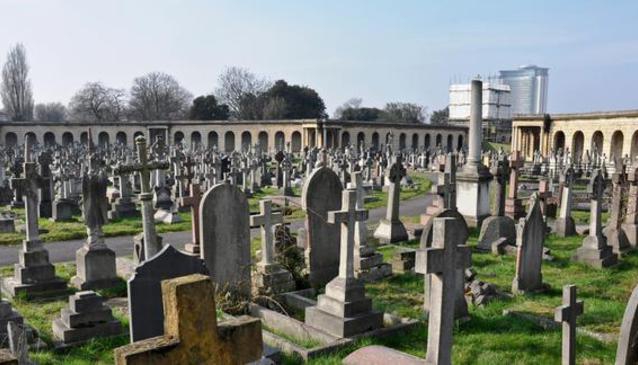Sunday, March 31, 2019
The Death of Death Culture - Brompton Cemetery
Reading through Deborah Lutz's The Dead Still Among Us, I was profoundly struck by the commentary regarding the disappearance within Western culture of consistently honoring and remembering the dead through relics, which she calls "death culture." Lutz's commentary struck me because of the truth behind it, in no way is holding onto remains of the dead normal or common within Western culture, most houses in modern times don't have an earn, rather the dead are placed in a cemetery, with there visitation varying by family.. As Lutz states, "Rarely would a lock of hair be kept by, or to be worn as jewelry, nor did one dwell on the deathbed scene, linger upon the lips of the dying to mark and revere those last words, record the minutiae of slipping away in memorials, diaries, and letters." While obviously common practice continues to be a funeral for the deceased, after that there are few artifacts kept, very different from the Victorian era. This became immediately obvious to me at the Brompton Cemetery, specifically looking at the many different meanings attached to different designs of tombstones. Examples of this include a broken column meaning a person who passed in the prime of their life, a pile of rocks with an anchor symbolizing hope, cut flowers meaning someone who dies very young, and many more. Complex and meaningful tombstones are very much a relic of Victorian past, no longer common in Western society. Lutz argues that separating oneself from acknowledged or remembering the moment of death for someone close may actually have an averse affect, as "one misses the moment when life becomes narrative, when the meaning of life is concluded and illuminated in its ending." This is very contrary to the modern sentiments of many, who hold beliefs that they would rather remember those close to them when in the prime of their life, as opposed to while sick on their death bed. However, to Lutz point, doing so may disallow those on their death bed the opportunity to impose memorable last words or lessons. For me personally, I do not take a strong side on this, as I think it is completely circumstantial and dependent on each individual to take whatever actions they feel are best for themselves and/or their family. That said, there is a very clear difference in the way the dead are remembered now versus in the Victorian era, something that was brought to life while walking the Brompton Cemetery, and something I found extremely interesting, as it granted a viewpoint I had never considered before.
While I find many of Lutz's ideas to be profoundly interesting, I do believe in some instances her opinions become a bit radical in nature. One specific instance is Lutz's acknowledgement of Walter Benjamin's opinion that "the turning away from death [goes] hand in hand with the disappearance of the art of storytelling." I find this notion to be quite unsubstantiated, as storytelling is an art which takes a wide variety of different forms, touches on many different subjects, and reaches different people in different ways. To make a blanket statement that the loss of "death culture" in the 20th century resulted in a widespread drop in the quality of story's being told, to me personally, has no credence. Further, simply looking at historical facts, millions and millions of stories, whether they be in written, film, or verbal form, have been created, sold, bought, cherished, and critically acclaimed over the 20th and 21st centuries. While I do understand that the element of death, and lessons learned from it, are huge and important parts of many stories, I do not believe storytelling can be relegated to one notion being its end all be all element.
Source: Lutz, Deborah. “The Dead Still Among Us: Victorian Secular Relics, Hair Jewelry, and Death Culture.” Victorian Literature and Culture, 2010.
Subscribe to:
Post Comments (Atom)

No comments:
Post a Comment